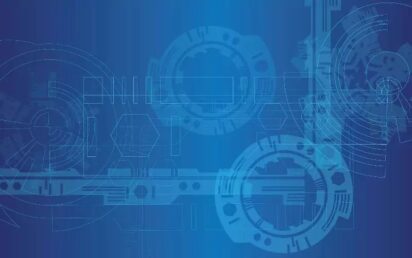A company offering a novel alternative for transmitting data has already secured big name clients including Microsoft, EDF, and Shuttl.
London-based Chirp uses ultrasonic sound to transmit data from one device to another, and the new tech could be an alternative to QR codes and Wi-Fi.
Founded in 2011, the company span out of research at the University of Central Lancashire.
Beginning life as a consumer app, it allowed people to share photos without a Bluetooth or internet connection by transmitting sound between devices at inaudible frequencies instead.
CEO James Nesfield explained that the technology is conceptually the same as Morse code, but more advanced.
“Technically speaking it’s in a different universe,” he told BusinessCloud.
The company soon realised its USP was the underlying transmission technology, and it could have far wider implications than a simple app.
Chirp’s technology converts data into a series of high-pitched noises outside the range of human hearing, which a second device can receive and convert back into data.
“A good way to think about it is like an audio QR code,” Nesfield explained. “You don’t need to do any pairing, or connecting to receive that data. It’s great for making really easy nearby connections.”
The company now boasts international brands among its clients. “There are instances where Chirp has replaced QR codes,” Nesfield explained.
The company worked with bus operator Shuttl in India, where it had employed QR codes for a ticketing system.
Nesfield explained that at night some of the user’s cameras struggled to read the QR codes, and both commuter and driver would find it hard to keep still enough to register the code.
Chirp’s sound-to-data technology helped to remove these barriers by replacing the system with its sound-to-date technology.
“Sound works great at night, and it works in parallel,” he said.
The company has also lent its technology to EFD’s Nuclear Power Plant.
The plant did not want to use traditional wireless technology like Wi-Fi and Bluetooth, but still needed to be able to wirelessly monitor devices and take sensor readings.
EDF approached Chirp to implement their sound-to-data tech.
“It was an incredible experience for us at the beginning to go to a huge industrial space with turbines and pumps going 100db.
“That’s jet engine territory and you have to wear ear defenders when you’re walking in there.”
Despite the noise, Chirp’s technology allowed the company to keep its devices connected and demonstrate that it would work even in noisy conditions.
“Typically in the ultrasonic range life is a bit quieter,” Nesfield explained.
“There are not that many things in our everyday lives which produce ultrasound, but one classic is squeaky break disks on a car. The frequencies they can produce can go right up through the ultrasonic range.”
Now focussed on expansion and working on new projects, the CEO is excited to see how Chirp’s technology will next be used.
“We hadn’t been sitting around a table thinking that nuclear power stations would be an interesting application,” he said.
“What excites me is not knowing.”


